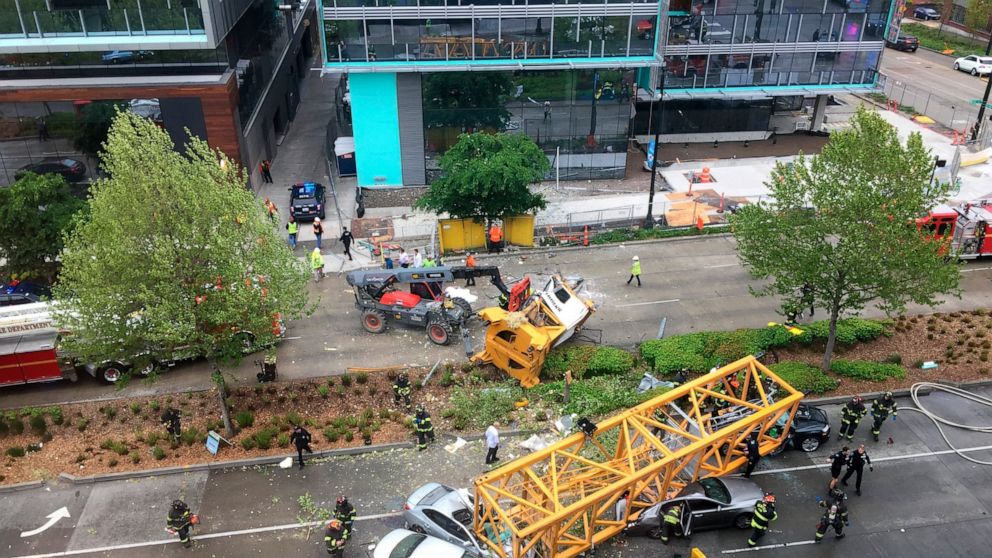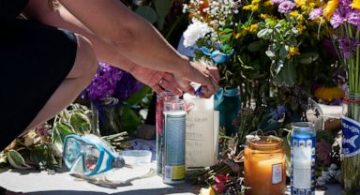
Human error may have caused a crane collapse that killed four people and injured four others in Seattle over the weekend, experts said Monday.
Based on videos of the collapse, they said it appears workers who were disassembling the construction crane had prematurely removed pins securing the sections of the crane’s mast to each other, and that could explain why the crane toppled in relatively minor wind gusts.
“The reason this tower fell over is ironworkers and the people working on it did not follow the manufacturer’s instructions for disassembling the crane,” said South Carolina crane accident investigator Tom Barth. “If the pins had been in, that crane would not have fallen over.”
The crane’s mast fell over on Saturday afternoon as workers were taking it apart. Sections landed on top of the new Google building it had been working on and on traffic below, striking six vehicles. Two ironworkers on the crane were killed as were two people in cars. Four others were injured.
Barth, who has been a tower crane operator, inspector and accident investigator for 38 years, said the only safe way to disassemble a tower crane is to do it by sections.
First, a line from another crane is secured to the top of the section being removed. Only then do workers remove the bolts that secure the section being removed to the one below it. The second crane lowers the section, Barth said.
The videos, including one from a dash camera in a car approaching as the crane fell, appear to show the sections of the tower crane separating cleanly, indicating the pins had likely been removed early, said Dave Kwass, a trial attorney who handles crane accident lawsuits.
“Where I would be starting as an investigator is getting a better grasp of what these two ironworkers who tragically were killed may have done in removing the pins,” Kwass said. “What I’m seeing is a crane that looks as though the pins were popped all the way down to the pedestal section.”
The same cause was blamed after tower crane mast collapsed during disassembly in Dallas in 2012. Terry McGettigan, a tower crane specialist in Seattle, declined to comment on Saturday’s crash, but he wrote a paper on the Dallas crash warning about the danger of taking shortcuts by loosening or removing the bolts in advance.
The Iron Workers Union Local 29 based in Portland, Oregon, and Local 86, in Seattle, who represented the workers who died, did not respond to requests for comment Monday.
Washington Department of Labor and Industries inspectors were expected to finish their work at the scene Monday, said Tim Church, a department spokesman. He said it was too early to speculate on a cause.
The department on Monday expanded its investigation to include a fifth company: Seaburg Construction Corp., which employed the tower crane operator. The other companies are general contractor GLY, Northwest Tower Crane Service Inc., Omega Rigging and Machinery Moving Inc., and Morrow Equipment Co. LLC
“GLY and its sub-contractors involved with this tower crane accident are doing everything we can to investigate the incident,” the company said in a written statement. “We are cooperating fully with investigators and assisting the local authorities. At this early stage of the investigation, we have no further details.”
The ironworkers who died were identified by their unions as Andrew Yoder, of Washington, and Travis Corbet, of Oregon. Corbet’s wife, Samantha Corbet, told Seattle television stations that her husband had served in the U.S. Marine Corps for five years before becoming an ironworker.
They married last year and planned to go on their honeymoon in June.
Also killed was Seattle Pacific University freshman Sarah Wong, the college said.





